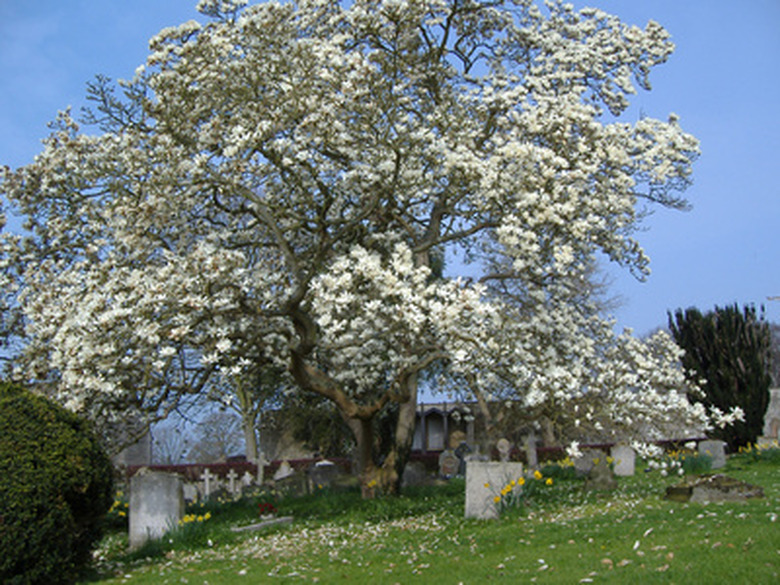How To Get Rid Of Black Mold On A Magnolia Tree
Black mold, or sooty mold, causes aesthetic problems for magnolia trees but does not hurt their growth. This fungal growth is caused by a sucking insect infestation, which leaves a sugary substance called honeydew on the leaves and bark of trees. Honeydew provides a hospitable environment for mold growth, especially if humidity levels are high. By removing the insect infestation, you can control the fungus and get rid of the black mold that is ruining the look of your magnolia tree.
Step 1
Inspect your magnolia tree for sooty mold. Sooty mold causes a velvety growth on leaves and bark. Look for sucking insects like aphids, mealybugs, soft scales, leafhoppers, whiteflies and psyllids. Check the tree above the infected tree, because the honeydew can drip onto the tree or vegetation underneath. You may also see ants crawling on the tree, because they are attracted to the honeydew.
Step 2
Spray the tree in the mid-morning with a garden hose to dislodge some of the black mold and remove the bugs. By spraying in the morning, you give your tree time to dry before nightfall. Wet leaves can encourage other fungal growth.
Step 3
- Inspect your magnolia tree for sooty mold.
- Check the tree above the infected tree, because the honeydew can drip onto the tree or vegetation underneath.
Step 4
Dilute 1 tsp. of detergent with 1 gallon of water. Spray the tree with the solution. The detergent is able to dry out many types of insects that have a waxy covering.
Step 5
If insects still exist on your magnolia tree, apply a pesticide that is chemically formulated to kill the insects. Follow the pesticide directions and spray the entire tree. Repeat the process in a couple of weeks.
Step 6
- of detergent with 1 gallon of water.
- Follow the pesticide directions and spray the entire tree.
Step 7
Prune any heavily damaged areas of your tree. Use bypass shears, lopping shears and a pruning saw. Cut to a healthy, outward-growing portion of the tree.
